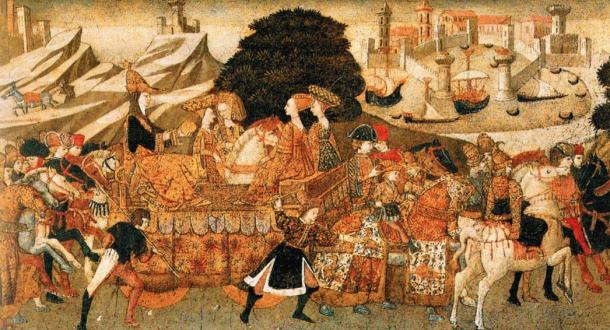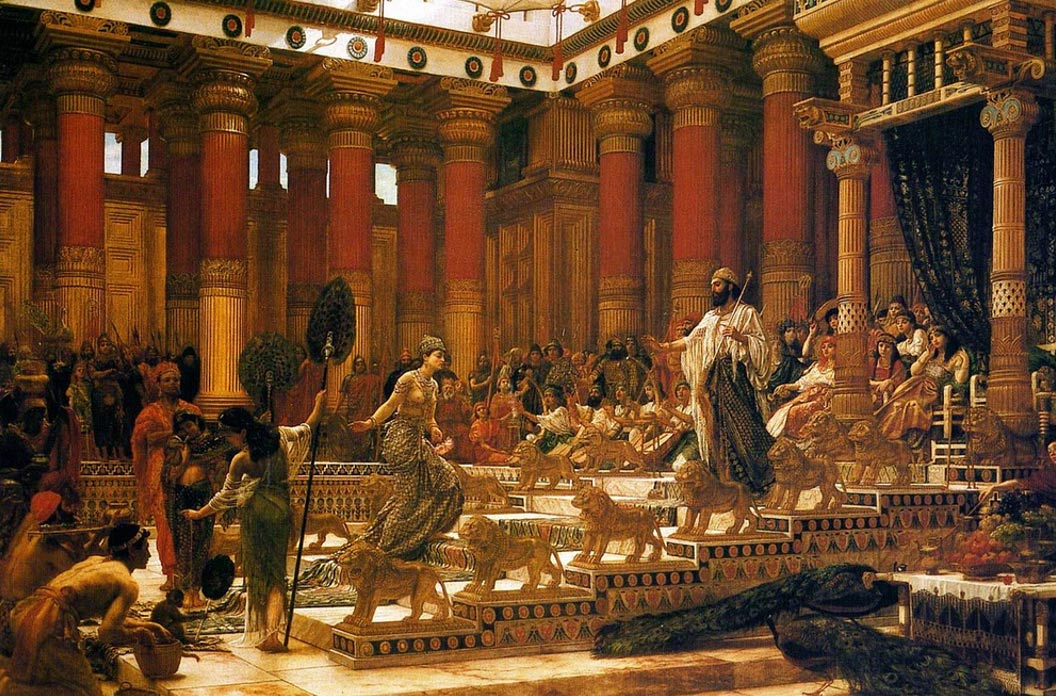The Ethiopian Gold Mine that may have supplied the Queen of Sheba with her riches
Ever wondered where the Queen of Sheba got her gold from? Sudan and Ethiopia are both in the region of what was the kingdom of Sheba, and both have ancient mines. In fact, the Asosa zone of Ethiopia could contain the oldest gold mine in the world at 6000 years old. Some geologists have argued that this zone is still rich with the precious metal. But whether this is the region where the Queen of Sheba sourced her gold remains speculation. In a region where prospects for gold deposits still abound, where does one start a search for an ancient gold mine? Well, a good prospect was found during a 2012 excavation in Ethiopia, when a team of British archaeologists may very well have found the answer.
The Queen of Sheba is famous in Biblical legend as the ruler who visited Jerusalem with loads of gold in order to impress King Solomon. Little else is known about her but the tale of her love affair with King Solomon inspired later mystical medieval literature in which she is described as possessing divine wisdom. She was also depicted in Turkish and Persian art and was featured in Handel's oratorio Solomon. She is also mentioned in various treatises in the Kabbala and her story was later the subject of Hollywood movies such as Solomon and Sheba of 1959. The legend states that she taunted the king with riddles and that he wooed her in return. Their child, Menelik, was the ancestor of the kings of Abyssinia.
Sheba was an ancient realm that existed during the 8 th Century BC. It lasted for a thousand years and included what is now modern Ethiopia and Yemen. The realm traded in incense and prospered because of its links with Jerusalem and the Roman Empire. Its famous Queen is mentioned both in The Koran and The Bible, which mentions that the Queen of Sheba arrived in Jerusalem “with a very great retinue, with camels bearing spices, and very much gold and precious stones ... Then she gave the king 120 talents of gold, and a very great quantity of spices.”

The Arrival of the Queen of Sheba by Apollonio di Giovanni (Wikimedia Commons). Note: Racial depictions are not accurate as the Queen of Sheba.
The Biblical stories of Sheba were written in the Iron Age. Several figures in the Bible are referred to as Sheba, one of them being a descendant of Noah’s son Shem. However, the name Sheba is actually a derivation of the Arabic ‘Shaba’, also known as the Sabaean kingdom. The story of its famous Queen appears in the Biblical book of Kings. Its capital was the city of Marib but the kingdom declined after a long civil war between numerous dynasties who each claimed the throne.
In 2012, a team of British archaeologists discovered an enormous gold mine in northern Ethiopia, along with a nearby battlefield and the ruins of a temple. The site is located on the high Gheralta plateau and the archaeologists knew it was once part of the realm of Sheba from the 20ft stone stele carved with the image of the sun and crescent moon – the emblem of Sheba.
- The Legendary Queen of Sheba and Her Iconic Visit with King Solomon
- Tracing the origins of a mysterious ancient Queen of Ethiopia
- The Intricately Carved Tiya Megaliths of Ethiopia

Landscape in Gheralta Massif, Tigray Region, Ethiopia (Wikimedia Commons)
“One of the things I've always loved about archaeology is the way it can tie up with legends and myths” archaeologist Louise Schofield told The Guardian shortly after the discovery. “The fact that we might have the Queen of Sheba's mines is extraordinary.”
Despite being warned the rock was the home of an enormous cobra, Schofield crawled beneath it where she discovered an inscription in Sabaean, an ancient language that would once have been spoken by the Queen of Sheba herself. On a mound nearby, the archaeologists discovered the ruins of an ancient temple that may have been dedicated to the moon god of Sheba. The team also discovered human bones on the site of an ancient battlefield nearby.
The ancient mine is believed to have once belonged to the Queen of Sheba. It was situated on a hilltop and entered by a shaft which is buried some 4 feet below the surface. The archaeologists found a human skull in the entrance, where chisel marks are still visible.
It may indeed once have supplied the Queen of Sheba’s treasure house.
Featured image: The Visit of the Queen of Sheba to King Solomon, painting by Edward Poynter, 1890, Art Gallery of New South Wales (Wikimedia Commons)

















